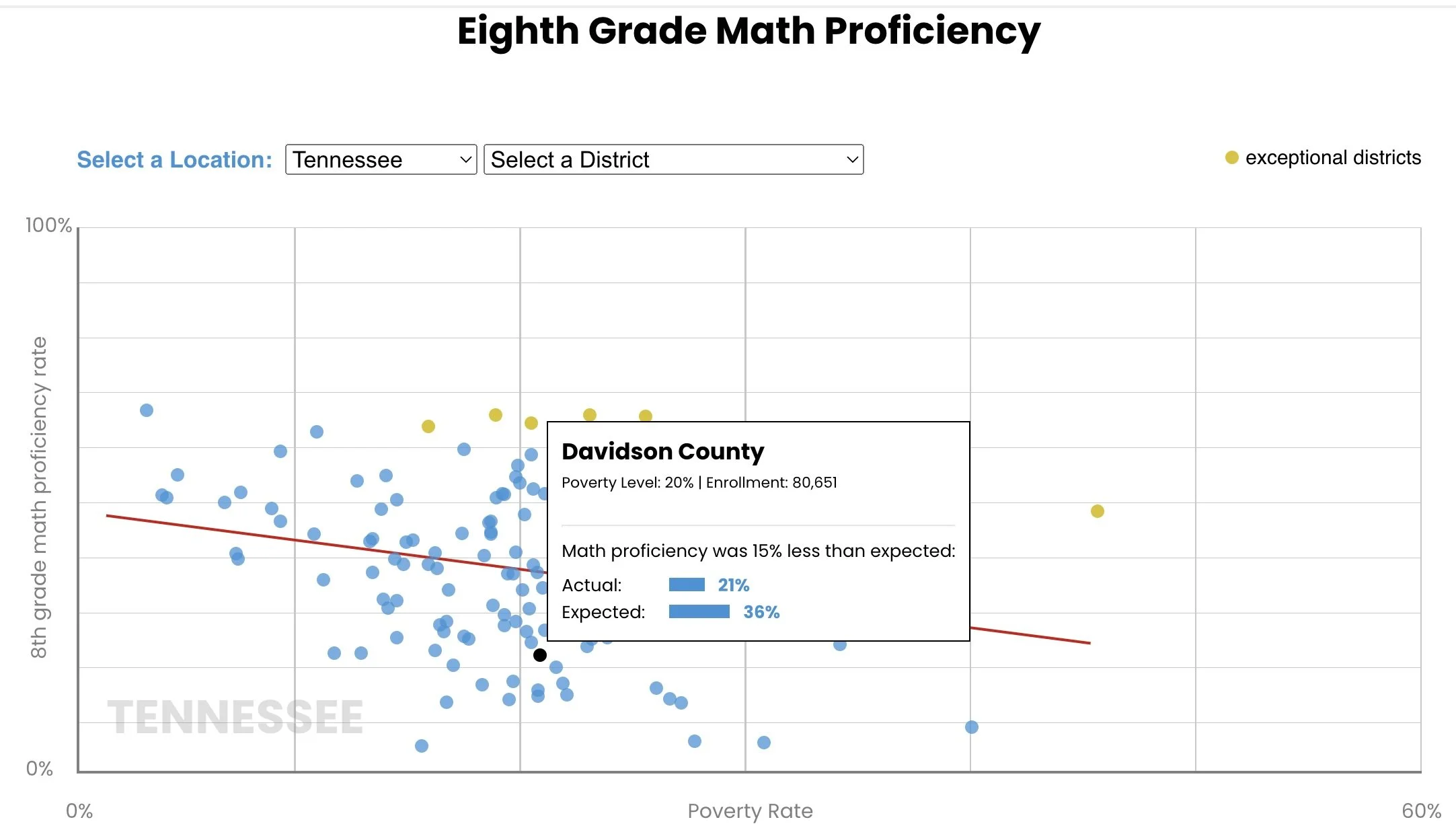New analysis finds Tennessee’s largest school districts underperforming math expectations
Graphic by The 74
It’s no secret that a family’s income plays a big role in academic achievement.
In Tennessee, students from economically disadvantaged backgrounds achieve proficiency on state math tests at roughly half the rate of other students, and there are significant gaps in other subjects.
The disparity can make wealthier school districts appear to be doing a better job with student performance than they are and the opposite with poorer districts. In an effort to see what districts are doing the best job educating students, nonprofit national education news organization The 74 conducted extensive research into eighth-grade math proficiency rates across the country and compared them to poverty rates.
“Looking at the scores this way helps identify the places with great school systems, where learning gains are driven by what students learn in the classroom. This is especially true in math, because unlike reading proficiency — which is closely tied to language skills and background knowledge that children acquire at home — math scores are more directly linked to school-based instruction,” wrote 74 writer Chad Aldeman.
Graphic by The 74
The 74 launched the results of that research Wednesday and it found Tennessee’s largest school districts are underperforming expectations. Of the state’s 12 largest school districts, only Williamson, Sumner, Wilson, and Sevier County School System had higher eighth-grade math proficiencies than expected based on poverty.
Graphic by The 74
On the other end of the spectrum, Knox, Jackson-Madison, and Memphis-Shelby County Schools all had math proficiency rates 20 percent or lower than expected based on poverty according to the 74’s research.
Graphic by The 74
Tennessee’s other large school districts fared a little better but still under expectations, ranging from 9 percent under for the Clarksville-Montgomery County School System to 15 percent under expectations in Metro Nashville and Maury County Public Schools according to the 74.





